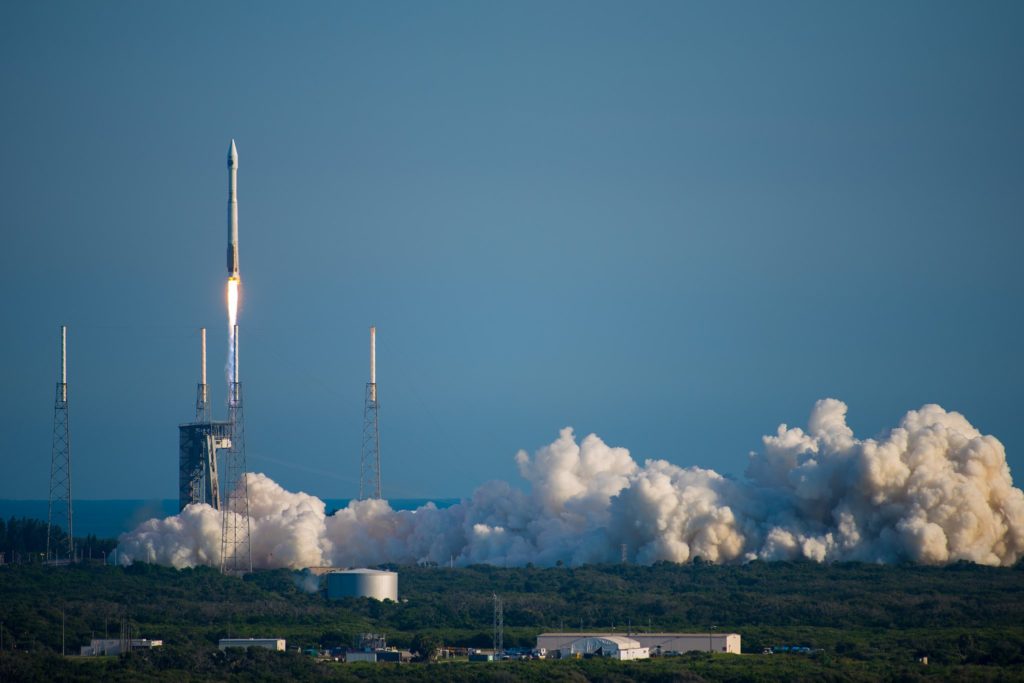Latest News

A United Launch Alliance (ULA) Atlas 5 rocket launching NASA’s Tracking and Data Relay Satellite (TDRS)-M from Space Launch Complex 41 at Cape Canaveral Air Force Station, Florida August 18, 2017. Photo: ULA
A United Launch Alliance (ULA) Atlas 5 rocket has successfully orbited NASA’s Tracking and Data Relay Satellite (TDRS)-M from Space Launch Complex 41 at Cape Canaveral Air Force Station, Florida. The TDRS-M launch was in jeopardy after one of the satellite’s antennas was damaged during final spacecraft closeout activities in July. The issue was resolved and the satellite will now join the Space Network, which consists of TDRS satellites that transmit data to and from ground stations on Earth for NASA missions and expendable launch vehicles.
The Tracking and Data Relay Satellite System (TDRSS), also referred to as the NASA Space Network, is a space-based communication system used to provide tracking, telemetry, command and high-bandwidth data return services. The TDRSS consists of satellites in geosynchronous stationary orbits and the associated TDRS ground stations. The TDRSS is a basic NASA capability and a critical national resource. Without it, scientists, engineers and control room staff would be unable to readily access data from missions like the Hubble Space Telescope and the International Space Station (ISS).
The TDRSS is capable of providing near-continuous, high-bandwidth (S, Ku and Ka band) telecommunications services for Low Earth Orbit (LEO) spacecraft (including the ISS) and expendable launch vehicles like ULA’s Atlas 5 and Delta 4 rockets that use the network to receive and distribute telemetry data during flight.
This was ULA’s fifth launch of 2017 and 120th overall. A ULA Atlas 5 also launched TDRS-K mission in 2013 and TDRS-L in 2014. This mission marks the 72nd Atlas V rocket since its inaugural launch in 2002.
Get the latest Via Satellite news!
Subscribe Now